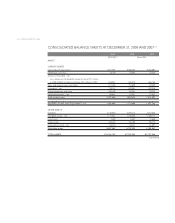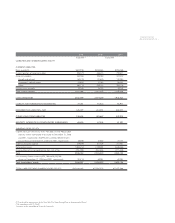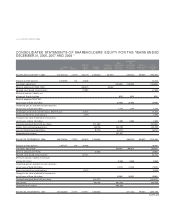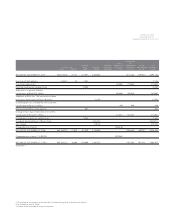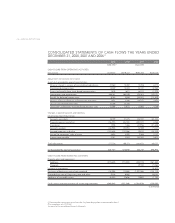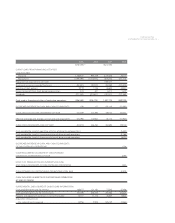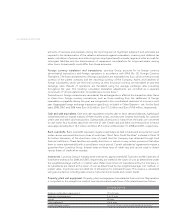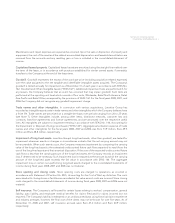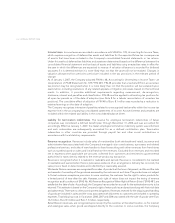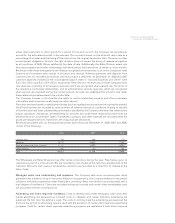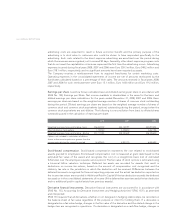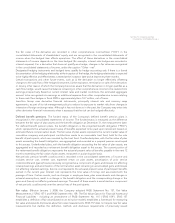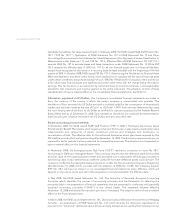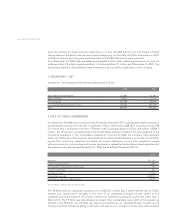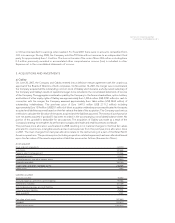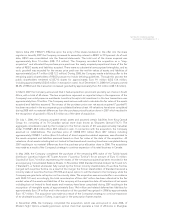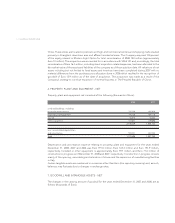LensCrafters 2008 Annual Report Download - page 64
Download and view the complete annual report
Please find page 64 of the 2008 LensCrafters annual report below. You can navigate through the pages in the report by either clicking on the pages listed below, or by using the keyword search tool below to find specific information within the annual report.
> 62 |ANNUAL REPORT 2008
Income taxes. Income taxes are recorded in accordance with SFAS No. 109,
Accounting for Income Taxes
,
which requires recognition of deferred tax assets and liabilities for the expected future tax consequences
of events that have been included in the Company’s consolidated financial statements or tax returns.
Under this method, deferred tax liabilities and assets are determined based on the difference between the
consolidated financial statement and tax basis of assets and liabilities using enacted tax rates in effect for
the year in which the differences are expected to reverse. A valuation allowance is recorded for deferred
tax assets if it is determined that it is more likely than not that the asset will not be realized. Changes in
valuation allowances from period to period are included in the tax provisions in the relevant period of
change.
As of January 1, 2007, the Company adopted FIN No. 48,
Accounting for Uncertainty in Income Taxes - an
interpretation of FASB Statement No. 109 (“FIN 48”)
. FIN 48 provides that a tax benefit from an uncertain
tax position may be recognized when it is more likely than not that the position will be sustained upon
examination, including resolutions of any related appeals or litigation processes, based on the technical
merits. In addition, it provides additional requirements regarding measurement, de-recognition,
disclosure, interest and penalties and classification. FIN 48 must be applied to all existing tax positions for
all open tax periods as of the date of adoption (see Note 8 for a tabular reconciliation of uncertain tax
positions). The cumulative effect of adoption of FIN 48 of Euro 8.1 million was recorded as a reduction to
retained earnings on the date of adoption.
The Company recognizes interest and penalties related to unrecognized tax benefits within the income tax
expense line in the accompanying consolidated statements of income. Accrued interest and penalties are
included within the related tax liability in the consolidated balance sheet.
Liability for termination indemnities. The reserve for employee termination indemnities of Italian
companies was considered a defined benefit plan through December 31, 2006 and was accounted for
accordingly. Effective January 1, 2007, the Italian employee termination indemnity system was reformed,
and such indemnities are subsequently accounted for as a defined contribution plan. Termination
indemnities in other countries are provided through payroll tax and other social contributions in
accordance with local statutory requirements.
Revenue recognition. Revenues include sales of merchandise (both wholesale and retail), insurance and
administrative fees associated with the Company’s managed vision care business, eye exams and related
professional services, and sales of merchandise to franchisees along with other revenues from franchisees
such as royalties based on sales and initial franchise fee revenues. Excluded from revenues and recorded
net in expenses when applicable are amounts collected from customers and remitted to governmental
authorities for taxes directly related to the revenue-producing transaction.
Revenue is recognized when it is realized or realizable and earned. Revenue is considered to be realized
or realizable and earned when there is persuasive evidence of an arrangement, delivery has occurred, the
sales price is fixed or determinable and collectibility is reasonably assured.
Wholesale Division revenues are recognized from sales of products at the time of shipment, as title and the risks
and rewards of ownership of the goods are assumed by the customer at such time. The products are not subject
to formal customer acceptance provisions. In some countries, the customer has the right to return products for
a limited period of time after the sale. However, such right of return does not impact the timing of revenue
recognition as all conditions of SFAS No. 48,
Revenue Recognition When Right of Return Exists (“SFAS 48”)
, are
satisfied at the date of sale. Accordingly, the Company has recorded an accrual for the estimated amounts to be
returned. This estimate is based on the Company’s right of return policies and practices along with historical data
and sales trends. There are no other post-shipment obligations. Revenues received for the shipping and handling
of goods are included in sales and the costs associated with shipments to customers are included in operating
expenses. Total shipping costs in fiscal years 2008, 2007 and 2006 associated with the sale of goods were Euro
14.2 million, Euro 8.3 million and Euro 7.3 million, respectively.
Retail Division revenues, are recognized upon receipt by the customer at the retail location, or, for internet
and catalogue sales, when goods are shipped directly to the customer. In some countries, the Company


